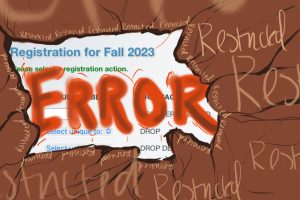Standardize same courses taught by different professors
April 19, 2023
Oftentimes, when course registration rolls around, students will try to glean information on which professor offers the easier section in terms of balanced amounts of homework, straightforward exams and lenient grading. Although students are also looking for comments on the different professors’ teaching styles, the aforementioned factors play a considerable role in students’ decisions.
To end this stressful pre-registration information scramble, UT should set stricter guidelines to standardize the curriculum and grading expectations of the same courses taught by different professors.
Standardization would ensure fairness in terms of course difficulty by giving students a uniform academic experience. Students would also be able to focus on choosing a professor’s course based on how the teaching style fits with their learning style, rather than based on whose section is more difficult.
Richard Flores, deputy to the president for academic priorities and a professor of anthropology and Mexican American and Latino/a studies, discussed the logistics of course curriculum planning and the reasoning behind the flexibility given to professors.
“Usually, departments will talk about learning objectives for their curriculum and for particular courses, but unless the course is part of a sequence, there may be less effort made at calibrating all those together,” Flores said. “How you (balance) that is really part of the art of teaching. And different faculty are going to have different ways of teaching in the same subject.”
While leaving the curriculum and pacing of specific course sections to professors allows them to maximize their unique teaching styles, too much flexibility can cause students taking the same courses to have altogether different experiences. Differing notes or lecture slides distributed by the professor can cause the same courses taught by different professors to have varying levels of difficulty for students, which can create an unfair distribution of grades.
From my personal experience, some courses determined class participation via Instapolls, while others surprised students with periodic, timed pop quizzes on readings. When I took multivariable calculus last semester, the exams were not standardized across sections, ranging from being online and homework-based to in-person and theorem-centered.
Henrique Bolfarine, a lecturer for STA 301 Introduction to Data Science and STA 235 Data Science for Business Applications, discussed why he believes standardizing introductory major-required courses with different sections would be beneficial.
“Because this course is required for all (McCombs) students, you usually have a lot of students in (STA) 301,” Bolfarine said. “I think standardizing, in this particular case, helps because we have so many students. It is a good idea to try to keep it as homogeneous as possible, especially the teaching material, readings and assignments.”
UT should include more guidelines to standardize courses taught by different professors by requiring that they assign the same assignments, agree on detailed rubrics to ensure fairness in terms of grading and make the same set of notes or lecture slides accessible to all students taking the course.
Fang is a business and Plan II freshman from Plano, Texas.
















